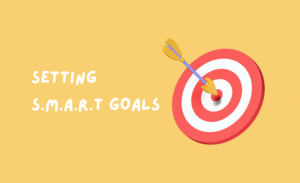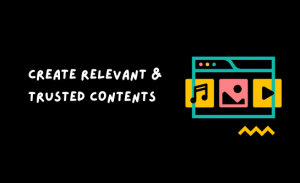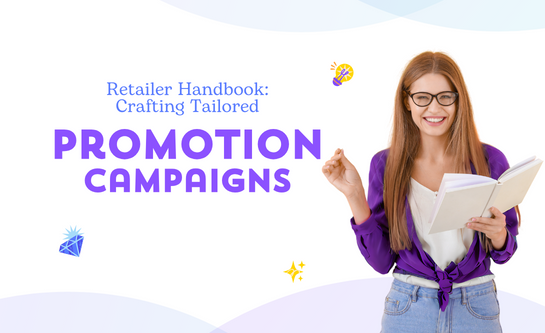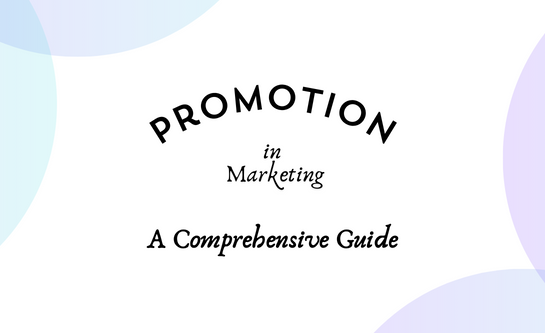Win Customer Attention: How to build stand-out promotion campaigns
 May 14th, 2024
May 14th, 2024
 506 views
4 MINS READ
506 views
4 MINS READ
Businesses need more than just a good product or service to succeed—they need effective promotion campaigns that cut through the noise and capture the attention of their target audience. With consumers bombarded with advertisements and marketing messages from all directions, creating standout promotion campaigns has become an art form. This detailed guide will provide a roadmap and useful tips for crafting stand-out promotion campaigns to win customer attention.
1. Apply SMART Goals

To create a distinctive promotion campaign, you must start by clearly defining your goals. Are you aiming to increase brand awareness, drive sales, generate leads, promote a new product or service, or re-engage existing customers? Your objectives will serve as the guiding force behind every decision you make throughout the campaign planning and execution process. Therefore, you must set SMART (Specific, Measurable, Achievable, Relevant, Time-bound) goals to ensure clarity and accountability. For example, instead of simply aiming to “increase sales,” you might set a goal to “increase online sales on S platform by 20% within the next three months.”
Additionally, to help the monitoring process be more convenient and effective, you should break your SMART goals into small objectives. This separation not only helps your businesses easily track performance but also makes your campaign more clear and successful.
2. Build personas based on market research
Determining and understanding your target audience is paramount to the success of promotion campaigns. Conduct thorough market research to gain insights into your audience’s demographics, psychographics, behaviors, preferences, and pain points. For instance, you should utilize tools such as surveys, focus groups, social media analytics, and customer feedback to gather relevant data.
Furthermore, to make your promotion campaigns stand out from others, you should segment your audience based on common characteristics and create detailed buyer personas to represent different segments. This will allow you to tailor your messaging, offers, and promotional strategies to resonate with each audience segment effectively.
3. Identify media behavior
Once you have a clear understanding of your target audience, it’s time to select the most appropriate channels to reach them. To choose the right channels, you need to research and identify the media behavior of your target audiences, which can be gained from analyzing the decision-making processes of consumers. For instance, where your audience spends their time online and which channels are most likely to resonate with them. The most active channels of your target audience can be social media platforms like Facebook, Instagram, LinkedIn, and Pinterest, search engines like Google, Bing, or Yahoo, email marketing, content marketing, influencer partnerships, or even offline channels such as events or print advertising.
Each platform offers unique opportunities and challenges, so tailor your campaign strategy to leverage the strengths of each channel. For example, Instagram might be ideal for visually-driven campaigns targeting a younger audience, while LinkedIn might be more suitable for B2B promotions targeting professionals.
4. Craft Heart-touching Key Messages
The success of your promotion campaigns hinges on the strength of your key messages. Your messages should be clear, concise, and relevant, capturing the essence of your offer and touching the pain points of your target audience.
Start by developing attention-grabbing headlines or taglines that spark curiosity and entice users to learn more. Use persuasive language and storytelling techniques to communicate the value proposition of your offer and address the needs or pain points of your audience.
5. Utilize the Power of Visuals
Visuals are powerful tools for capturing attention and conveying messages quickly and effectively. Eye-catching graphics, videos, and imagery not only draw the eye but also evoke emotions and tell stories in a way that resonates with the audience. By investing in visually appealing content that aligns with the brand’s identity and values, marketers can create a memorable and impactful experience that leaves a lasting impression on consumers.
In addition to written content, incorporate visually appealing elements such as high-quality images, videos, infographics, or animations to enhance engagement and convey your message more effectively. Visual content tends to grab attention more quickly and can help your promotion stand out in crowded feeds.
6. Enable Seamless touchpoints
To maximize the reach and impact of your promotion campaigns, leverage a multi-channel marketing approach to connect with your audience across various touchpoints. Each channel offers unique opportunities to engage with your audience at different stages of their buyer’s journey, from awareness to consideration to conversion.
Develop a cohesive cross-channel marketing strategy that integrates your promotion campaigns across multiple platforms and channels. For example, you might use social media to generate awareness and drive traffic to your website, email marketing to nurture leads and encourage conversions, and retarget ads to re-engage users who have shown interest but have not yet converted.
Maintain consistency in branding, messaging, and design across all channels to reinforce your campaign’s messaging and create a seamless omnichannel experience for your audience.
7. Create Relevant & Trusted Contents

Content lies at the heart of any successful promotion campaign. Create high-quality, relevant, and engaging content that adds value to your audience and encourages them to engage with your brand.
Consider the preferences and behaviors of your target audience when deciding on the type of content to create. This could include blog posts, articles, videos, podcasts, infographics, interactive quizzes or polls, user-generated content, or behind-the-scenes glimpses of your brand.
Focus on creating content that educates, entertains, or inspires your audience, rather than exploit promotional material. Be authentic and genuine in your communication, and strive to build meaningful connections with your audience.
8. Ensure campaign consistency
As the buying process of consumers, these days involves multiple touchpoints, it is essential to ensure your campaign messages are conveyed seamlessly to the target audience across channels. In detail, businesses need to ensure that your website, email banners, display ads, social visuals, and other marketing materials are friendly to different devices. Furthermore, it is also vital to guarantee that offline touchpoints such as OOH posters, and salespersons communicate the same information as online channels. With these practices, businesses would provide a seamless user experience across all touchpoints.
For online touchpoints, businesses should pay attention to factors such as page load times, responsive design, intuitive navigation, and mobile-specific features to optimize mobile interfaces. This is because over 45% of global consumers shop by phone daily. Besides that, remember to test your campaign across different devices and screen sizes to identify any potential issues and make necessary adjustments. With these implementations, businesses can attract more consumers to be aware of your campaigns and stimulate conversion.
9. Periodic monitor and react quickly
Monitoring the periodic success of the campaign against its aligned objectives and KPIs is a must-have in this fast-changing world. Practically, businesses can decide the tracking period as daily, weekly, or else based on your initial strategy and campaign timeline. Plus, brands should select metrics such as sentiment, website traffic, brand mentions, conversions, engagement rate, and CTR to understand the campaign performance in more detail. After that, marketers should compare the actual results to your periodic goals to determine unplanned issues and ensure campaign effectiveness.
Identifying unexpected issues and trends through routine tracking allows businesses to make prompted improvements. For example, if you identified low brand mention in your awareness campaign, quickly changing or expanding channels could increase your campaign performance. Businesses should remember that distinctiveness and speed are two key drivers in executing effective campaigns.
Conclusion
Crafting compelling promotion campaigns that capture customer attention and drive results requires careful planning, strategic execution, and ongoing optimization. By following these tips, you can create promotion campaigns that resonate with your target audience, inspire action, and ultimately contribute to the success of your business. With dedication, creativity, and a data-driven approach, you can stand out in a crowded marketplace and achieve your marketing objectives effectively.
 Back to blog page
Back to blog page




























